An ingenious solution: From metal wool to metal fiber yarn
In cooperation with Baumüller and the Technical University of Dresden, Deutsche Metallfaserwerk Dr. Schwabbauer GmbH & Co. KG has developed a yarn winder for the production of metal fiber yarn with six drives and an application-optimized software solution
The metal fibers produced by Deutsche Metallfaserwerk Dr. Schwabbauer GmbH & Co. KG, under the STAX brand, can be manufactured in different yarn qualities. The principle of this machine is best compared with that of an oversized comb and curler. Processors attach importance to variable thicknesses and a wide variety of materials, such as copper or stainless steel.
The textile chain begins with the production of yarns. These are made from raw materials such as cotton or linen. To enable a broad product range, the preparation of raw materials is sometimes very complicated. Spinning preparatory machinery has the task of forming the fibers in one yarn. Depending on the area of application, all kinds of different procedures are used for this. Then, the fibers can be spun together into one thread.
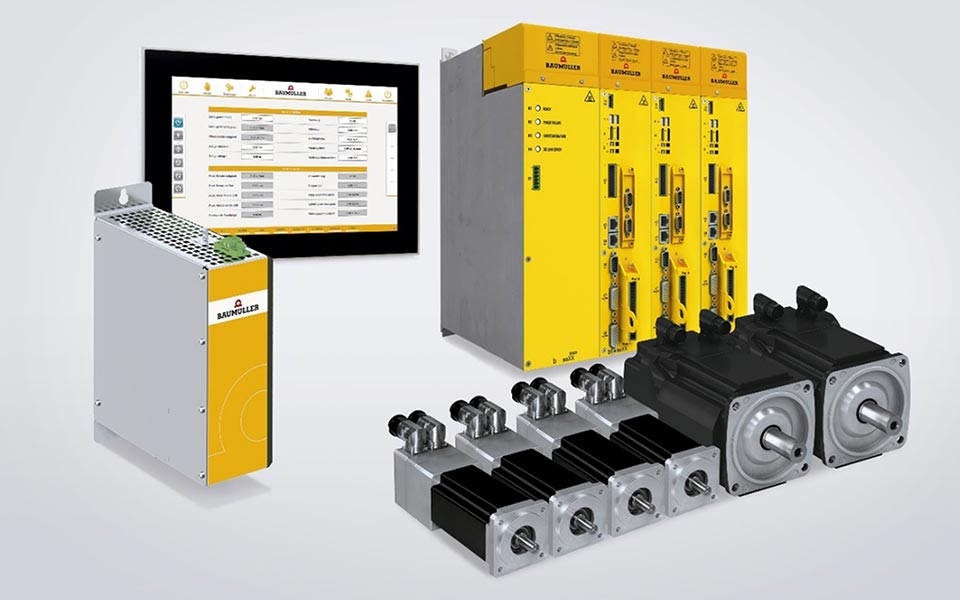 Thanks to the perfect interaction of all drive components and the application-optimized software solution, different materials can be produced in many different fiber thicknesses and lengths
Thanks to the perfect interaction of all drive components and the application-optimized software solution, different materials can be produced in many different fiber thicknesses and lengths
Manufacturing metal fiber yarn? No problem for STAX!
The German metal fiber plant Dr. Schwabbauer GmbH & Co. KG from Neidenstein in Baden-Württemberg has been producing metal fibers for technical applications for over 70 years. Under the STAX brand, the company produces metal fibers and metal fiber products that have applications in many sectors, such as the automotive industry, plant engineering, lightweight design or the construction industry. To further expand its product range in the future and open up new customer segments, Deutsche Metallfaserwerk has joined forces with the Institute for Textile Machinery and High Performance Textile Materials (ITM) at Dresden University of Technology and Baumüller to develop a machine that can process metal fibers into metal fiber yarn.
“The challenge was to combine all the components of yarn production in a single machine and in a single software package,” explains Alexander Obst, business developer at Deutsches Metallfaserwerk. In addition to being able to produce yarn from diverse metallic materials, such as stainless steel or aluminum, it was important for STAX to be able to produce different yarn thicknesses. This means that the machine not only has to run smoothly, but the interface between the software, the operation and the drive concept also has to be right. After all, this variety is only possible in the first place if all of the parameters are precisely maintained.
This is why the company has opted for a complete system from Baumüller for the yarn winder. The integrated concept consists of a b maXX-PCC-04 control unit including a touch panel, a system rectifier, three dual-axis servo-controllers, six DSD2 servo-controllers and an application-optimized software solution.
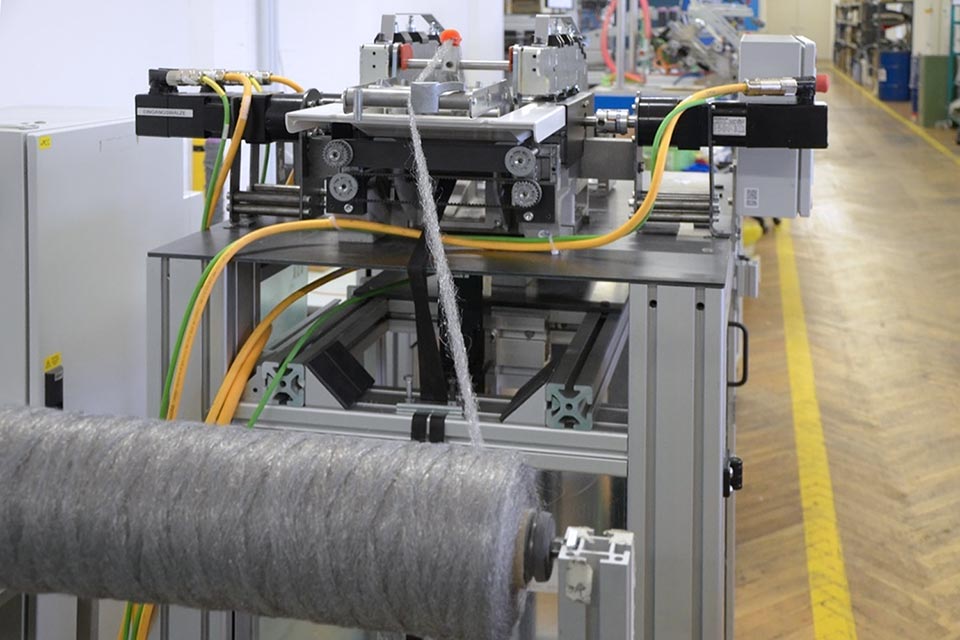 In cooperation with Baumüller and Dresden University of Technology, a compact, transportable machine for the production of metal fiber yarn has been created
In cooperation with Baumüller and Dresden University of Technology, a compact, transportable machine for the production of metal fiber yarn has been created
Challenges of the yarn winder
Figuring out how the gear ratio of the individual drive modules works best in the interaction of the bobbin with the yarn was one of the core mathematical tasks in cooperation with the Technical University of Dresden: “What made it challenging was that the machine had to be compact and mobile. And on a small scale. In general, the implementation was a major undertaking, since metal fibers behave quite differently from textile fibers. The machine and control technology was implemented by ITM and it was very exciting,” reports Dr. Mahmud Hossain from the Institute of Textile Machinery and High Performance Textile Technology (ITM).
Application-optimized software solution
A Baumüller template was used as the basis for the software and adapted to the application, which also significantly reduced development time: “An intuitive and easy-to-use user interface was important to the customer. The aim was to have the machine status visible at all times and to be able to set all important machine parameters. Baumüller successfully implemented all these requirements,” reports Axel Hohmann, application engineer at Baumüller. The machine not only monitors the production process, but also switches off automatically when the desired production quantity is reached. The axes can be operated individually or as a group in jog mode (manual operation): “This is useful when the bobbin is changed, for example. For the yarn to be laid on automatically, the bobbin must be correctly positioned in relation to the yarn feeder (finger).” Recipe handling is effectively a cookbook in which product-specific parameters for a wide range of yarn thicknesses and lengths are stored so that production can be started quickly and reliably each time. The “Alarms” tab contains an error history and reports any faults.
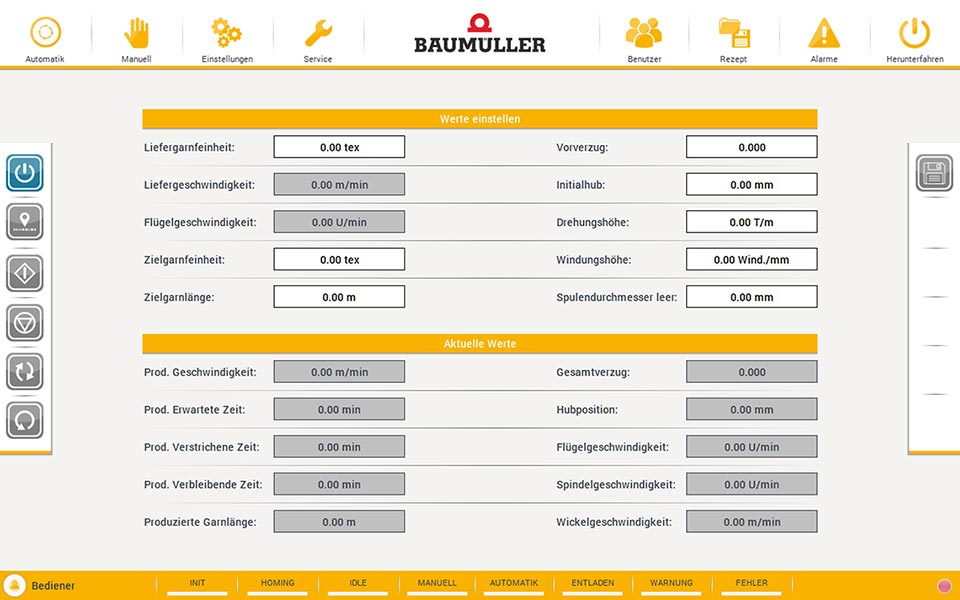 The application-optimized software enables targeted parameter input to produce the metal fiber yarn in the desired fineness and length
The application-optimized software enables targeted parameter input to produce the metal fiber yarn in the desired fineness and length
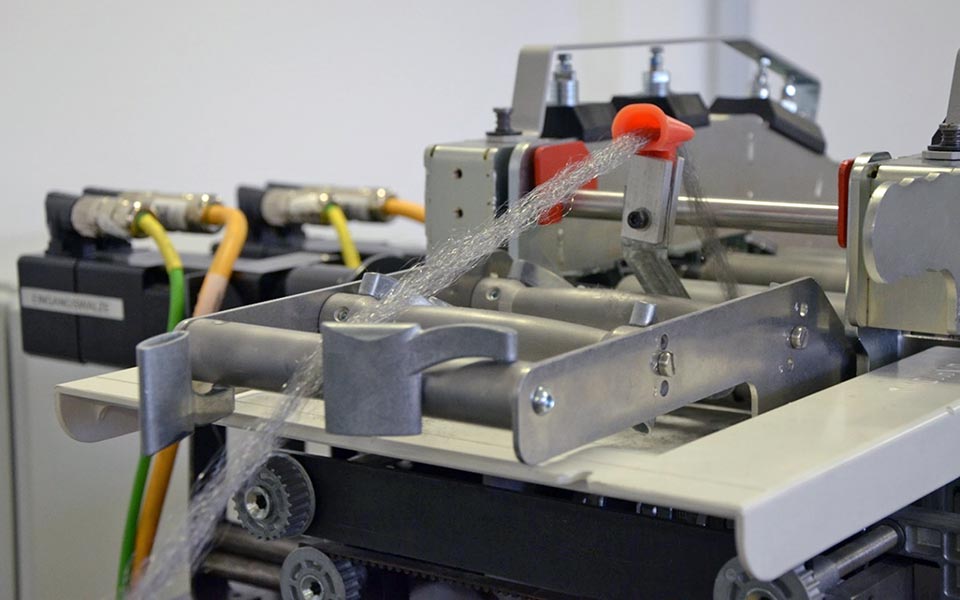 The air-cooled DSD2 servomotors drive the drawing block and ensure precise results
The air-cooled DSD2 servomotors drive the drawing block and ensure precise results
Constant speeds required
Air-cooled DSD2 servomotors are used, which were designed for highly dynamic applications with the highest requirements for acceleration capability and optimum start-stop qualities. The ratio of speeds among the individual motors must be constant in the yarn winder to achieve precise results. The DSD2 drives have very good concentricity characteristics and, in interaction between the servo drives and the air-cooled b maXX controllers, enable high accuracy in terms of position and speed. The layout has been optimally designed for the motion control application, i.e. the components work perfectly together and are very energy-efficient as they share energy in the DC link system.
Should a machine operator open access to the workspace, the STO safety function is triggered with a controlled time delay, allowing the drives to shut down quickly yet in a controlled manner. After the process has been executed, the drives are rendered torque-free. The machine has sensors for yarn break monitoring to interrupt the production process in the event of an error. The yarn winder is highly variable and allows a yarn weight of up to approx. 2,500 tex (tex = number of grams per 1,000 meters of yarn, so 1,000 meters of yarn weigh 2,500 grams).
Smart teamwork
STAX and ITM worked together with Baumüller as a competent partner for the development of the yarn winder. Baumüller impressed with its concept of offering the software and drive technology in combination. The technical know-how in combination with the theoretical calculations of the Dresden University of Technology supported the design of a unique, new machine that efficiently produces metal fiber yarn according to customer specifications.
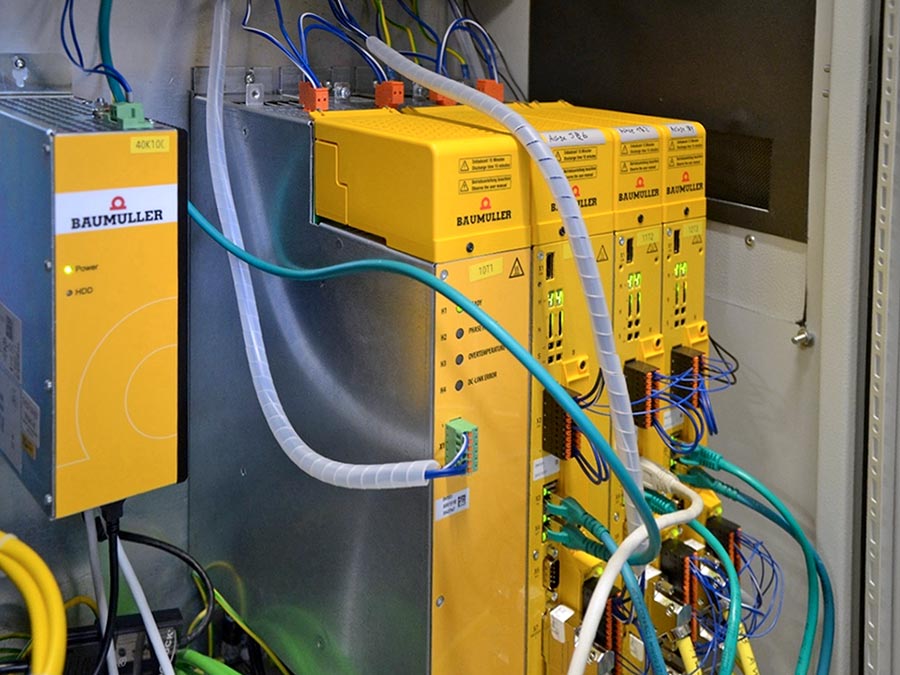 The air-cooled b maXX 5300 dual-axis controllers (right) with integrated safety technology enable high accuracy in terms of position and speed control. The b maXX-PCC-04 control unit (left) handles demanding, highly synchronous control tasks
The air-cooled b maXX 5300 dual-axis controllers (right) with integrated safety technology enable high accuracy in terms of position and speed control. The b maXX-PCC-04 control unit (left) handles demanding, highly synchronous control tasks
Conclusion
The cooperatively developed yarn winder is highly variable. It can be used to produce both extremely fine and very thick metal fiber yarns from a wide range of materials. This is made possible by a wide speed range and excellent control accuracy. In cooperation with Baumüller and Dresden University of Technology, a compact, transportable machine for the production of metal fiber yarn has been created. The complete system consists of a control unit with a touch panel, drives, controllers and an application-optimized software solution. This enables flexible and efficient production thanks to an easy-to-use user interface and recipe handling with a simple parameter input.